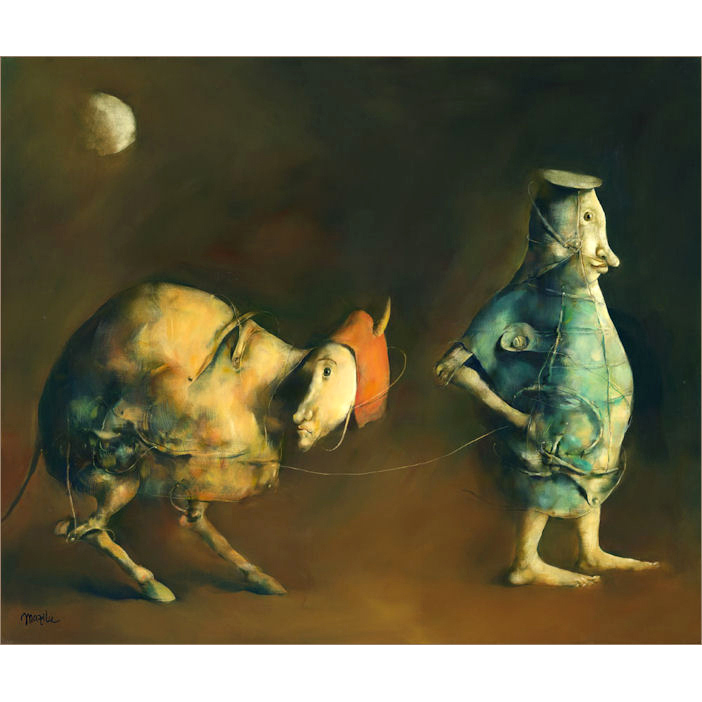Artwork Description
Georges Mazilu – Promenade vespérale
Dimensions: 23 x 27″ approx framed / 18.1 x 21.7″ unframed
Year: 2013
Medium: acrylic on canvas
Georges Mazilu’s “Promenade vespérale” contains rendered characters that are at once human and subhuman, allowing viewers to recognize pieces of themselves within a scene replete with whimsy. The figures appear caught in a single moment during an otherwise longer journey; the moon in the background of the work suggests a sense of passing time, much in the same way that this omnipresent celestial body waxes and wanes in ever repeating cycles.
While Georges Mazilu’s oeuvre often focuses on the human form—despite his characters’ unusual proportions and physical compositions—his works begin as loose abstractions that gain recognizability through process. Mazilu describes his paintings as mapping the transition from unconscious to conscious processing and often navigate the tension between his ‘will’ and ‘possibilities’. Mazilu was born in Romania and quickly developed an affinity for producing art, eventually pursuing formal training at the prestigious Grigorescu Institute of Fine Arts. After following what might be considered a classical education, Mazilu’s work began to develop a contemporary edge as it encountered the swell of modern art. Mazilu’s works often combine realism with the absurd and touch on the styles of canonical surrealist artists like Hieronymus Bosch or Salvador Dali. Mazilu’s paintings employ muted color palettes and simple backgrounds, drawing viewers’ attention to his carefully rendered characters posing in formal portraiture style or displaying less-than-human behavior.
Georges Mazilu escaped Romania during the Ceausescu regime, in the early 1980s. He spent numerous years living and painting in France and Spain. His works are in esteemed musuem collections throughout the world, including those of the Denver Art Museum, Fine Arts Museums of San Francisco, and Tucson Museum of Art. The most recent museum to acquire his paintings is in Australia, and the earliest museum to aquire his works was the Museum of Contemporary Art in Sofia, Bulgaria. Mazilu is a highly collectible artist, with a monograph written by Sam Hunter, Professor Emeritus of Art History at Princeton University, and several essays by South African Anti-Apartheid author, Andre Brunke.
By Keira Seidenberg, Art History/Gender Studies student, McGill University

